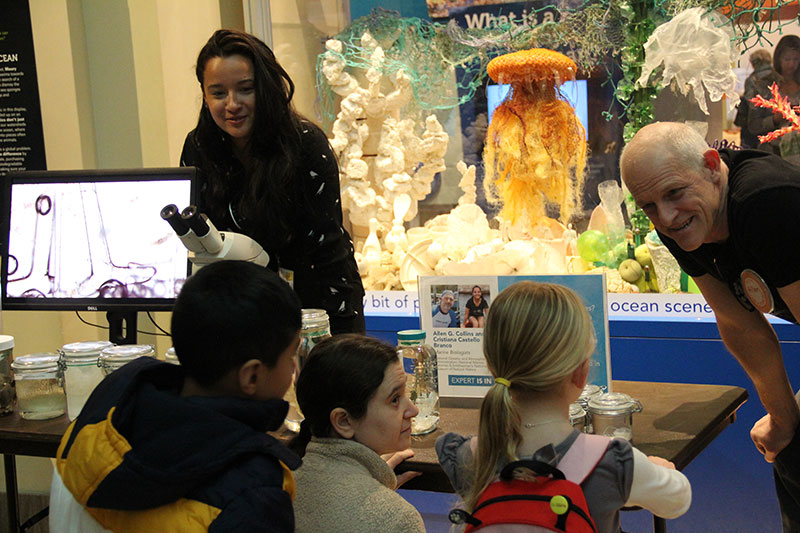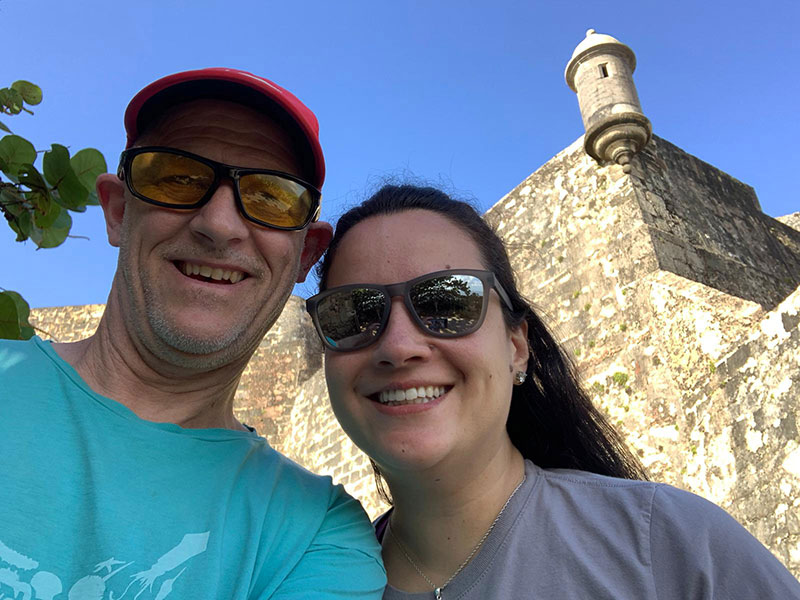Illuminating Biodiversity in Deep Waters of Puerto Rico 2022
April 6 - 19, 2022
[ Disponible en español ]
Shepherding the Next Generation of Ocean Explorers: Postdoctoral
When Allen Collins and Cristiana Castello Branco (Cris) first started corresponding in May of 2016, neither guessed their paths would lead them here. Cris’s doctoral advisor (Eduardo Hajdu) and Allen have been collaborators for many years, so when Cris won a fellowship that allowed her to do six months of her doctoral work outside of her country, Brazil, Allen’s work with sponges at the Smithsonian National Museum of Natural History (NMNH) seemed like the perfect fit.
“Sponges have been my passion since I was an undergraduate student,” Cris wrote. “I had started working as a volunteer in the Porifera collection at my hometown museum and quickly realized that I had fallen in love with them. Seeing all those names and body shapes, I wanted to understand how the diversity of structures and colors between sponges relates them to one another, and why we see them geographically where we do. I was so excited when we sent Allen my project, and without even meeting me, he said yes!”
“There are two great joys in my professional life. The first is the production of new knowledge,” Allen wrote. “But over the years, another motivation has eclipsed that: fostering the growth and development of new biodiversity scientists with all sorts of specialties. Right from the start, I loved Cris’s enthusiasm and knew this was the start to a great collaboration of learning together. And I have learned so much from her; Her taxonomic expertise is terrific. She is fearless in doing the work necessary to identify sponges, from preparing the samples to digging into the vast literature that has to be referenced for making accurate identifications and describing new species. And we both get really excited by the results she is producing.”

After their time together at the Smithsonian, Cris returned home to Brazil and finished her Ph.D. with a newfound focus on deep-sea sponges. Allen continued his work with NOAA and the NMNH. Now armed with a doctorate, Cris went on to win two competitive grants, including the Peter Buck Fellowship at NMNH, to support her continued work at the Smithsonian with none other than Allen as her postdoc advisor. Despite their many years of working together, they’d never had the opportunity for joint fieldwork. That is, until the Illuminating Biodiversity in Deep Waters of Puerto Rico expedition.
“Once this expedition was funded, I was so excited at the prospect of working in the field together,” Allen wrote. “Not only do we get to collaborate on this work, we also will have plenty of opportunities to talk about scientific questions and plan future collaborations, some of which will build on what we are able to accomplish as part of this expedition! There’s no better scientist to have aboard than Cris. Seeing her establish herself as one of the leading sponge systematists in the world gives me a lot of faith in her future success and the success of our field.”
Along with a few other great collaborators, Allen and Cris are working on a proposal to the National Science Foundation, with Cris as principal investigator, to build on the work they've started here.

By Allen Collins, Co-Principal Investigator, NOAA Fisheries National Systematic Laboratory and Smithsonian National Museum of Natural History and Cristiana Castello-Branco, Postdoctoral Fellow, Smithsonian National Museum of Natural History
Published April 12, 2022